Withlacoochee River System Update - 8/3/2020
Southwest Florida Water Management District sent this bulletin at 08/03/2020 05:20 PM EDTWithlacoochee River System in Good Shape as our Wet Season Continues
Rainfall:
- We are officially halfway through our wet season (June to September).
- Our region received an average of 8.2 inches of rainfall in July, similar to the historical average (8.3 inches) for that month.
- So far this year (January through July), we’ve received about 26 inches of rainfall.
- By this time last year we had received over 33 inches (including much more rain in June and July).
- These differences in rainfall have caused lake and river levels to remain lower so far this summer.
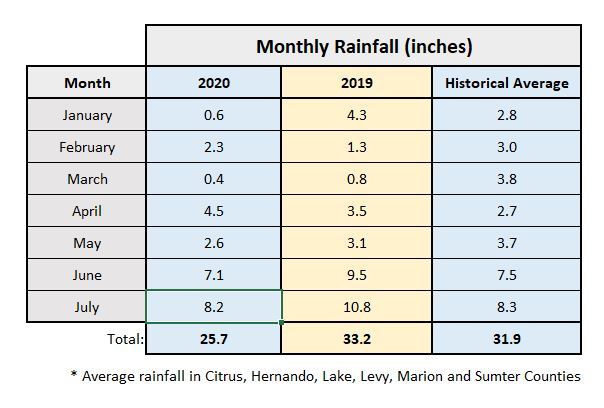
Little Withlacoochee River (July 2020)

Withlacoochee River (from the Green Swamp downstream past Hwy 200):
- We typically see a sharp rise in river levels and flows during the month of July, as rainfall saturates soils and adjacent swamps flow into the river.
- While river levels did increase about a foot over the past month, they are currently about 3.5 feet lower than they were at this time in 2019.
- River flows also increased in July, but are currently about 75% less than they were a year ago.
- We simply haven’t had enough rainfall this summer to fill the available storage (soils and low areas) in the watershed and drastically increase river conditions yet.
- There in now a small amount of flow exiting the Green Swamp (where the river begins), but significantly lower than this time last year.
- The table below compares current river levels and flows to what they were last month and last year.
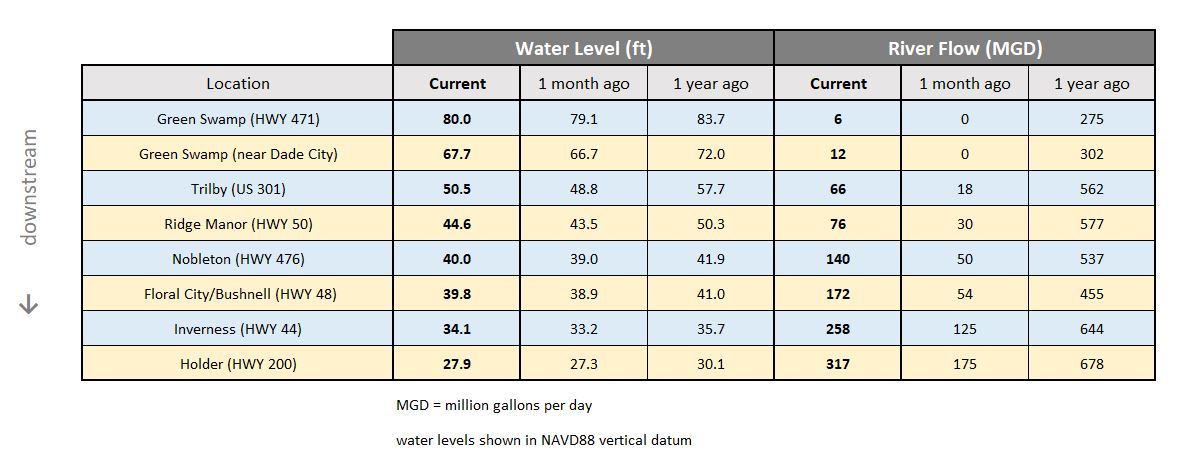
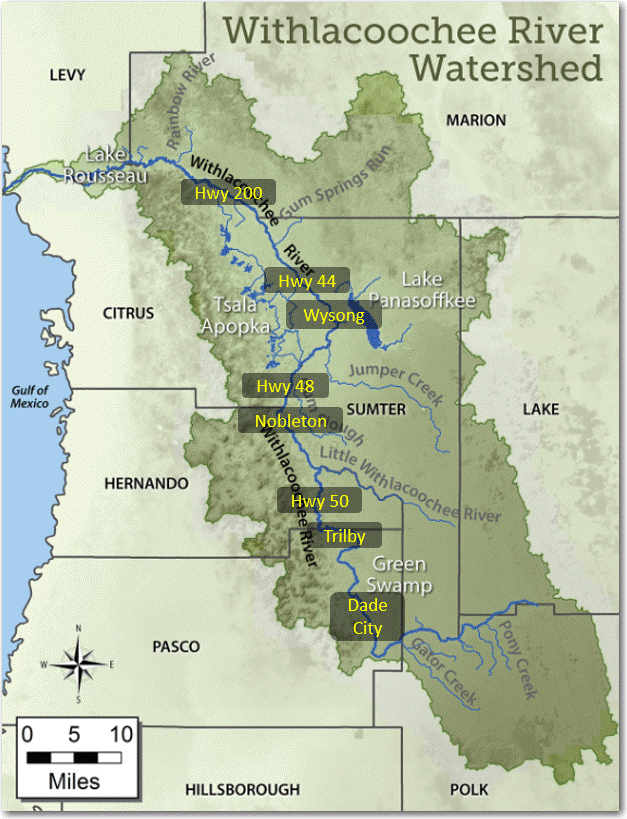
Tsala Apopka Chain of Lakes:
- The combination of rainfall and river inflows pushed lake levels higher in July.
- Water levels in the Tsala Apopka lake chain rose an average of 11 inches over the past month, but remain about 9 inches lower than they were at this time last year.
- Rainfall, measured from gauges on the lake chain, was about 12 inches in July (higher than the regional average of 8.2 inches).
- Several water control structures, which were opened in mid-June, remain open allowing river water to flow into all three pools of the lake chain (see map below).
- River inflows are minimal since the Withlacoochee River is currently only a couple inches higher than the Floral City Pool.
- Navigation between the Floral City Pool and Withlacoochee River remains available as the Leslie Heifner and Floral City structures are still fully open.
- All three pools are currently 1 to 1 ½ feet below their high guidance levels.
- The table below compares current water levels to what they were last month and last year.

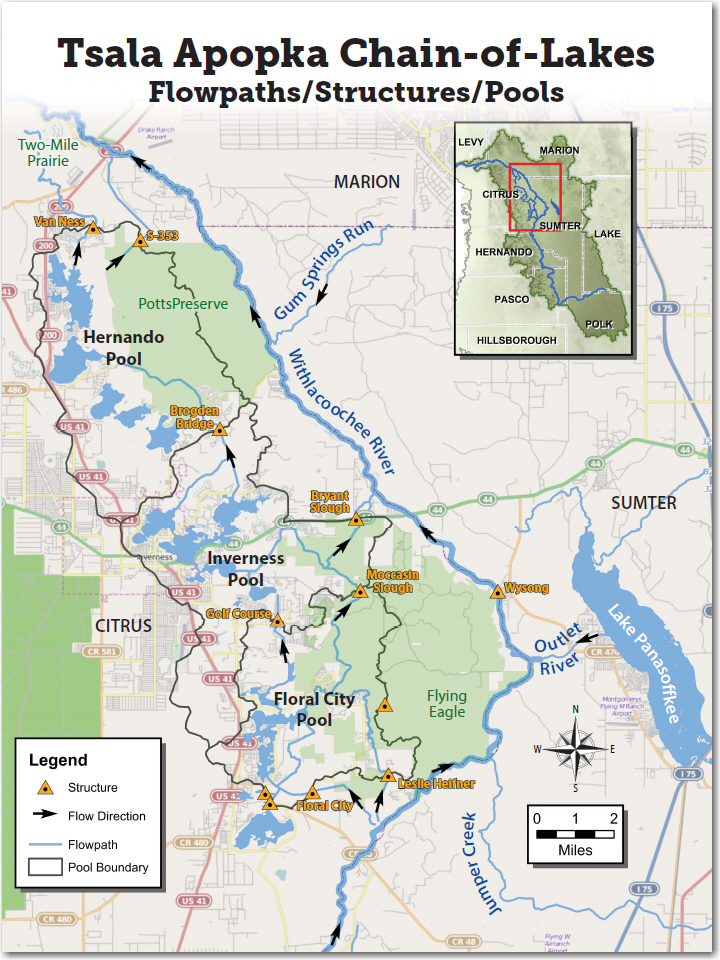
Lake Panasoffkee and Wysong:
- Water levels on Lake Panasoffkee rise and fall each year from changing rainfall patterns that affect inflows to and outflows from the lake.
- In July, the lake rose about 5 inches.
- Inflow from the lake’s largest tributaries (Little Jones Creek and Shady Brook) remained about the same in July.
- Outflow from the lake to the Withlacoochee River has also remained steady over the past month.
- Lake Panasoffkee is currently 19 inches lower than it was last year at this time. Both inflows and outflows are also lower this year.
- You may recall very high lake levels last summer, which were the result of above average rainfall and heavy vegetation in the Outlet River (blocking outflow).
- This spring, FWC and the District worked with the Univ. of FL to remove vegetation growth in the outlet river again to help prevent similar conditions this summer.
- The Wysong Water Conservation Structure remains raised, helping to conserve water upstream and in Lake Panasoffkee.
- The main gate (220 ft wide) is currently fully raised while the independent gate (19 ft wide) is partially lowered.
- The table below compares current lake levels and flows to what they were last month and last year.
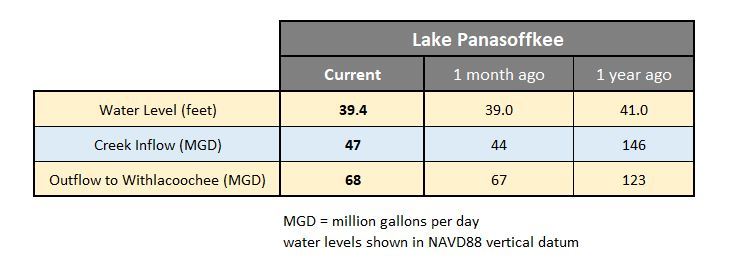
Lake Rousseau and the Lower Withlacoochee River (from Dunnellon to the Gulf of Mexico):
- Downstream from Dunnellon, the Withlacoochee River combines with the Rainbow River to provide inflows to Lake Rousseau.
- Over the past month, Lake Rousseau inflows increased by 29%, mostly due to higher flows in the Withlacoochee River.
- The Rainbow River is still contributing more flow to Lake Rousseau than the Withlacoochee River, but that is expected to change as summer rains continue.

- Outflows from Lake Rousseau have also increased over the past month, but remain quite a bit lower than they were last year at this time.
- All flow exiting the lake is still passing through the Inglis Bypass Spillway to the Lower Withlacoochee River.
- The Lower Withlacoochee River, which is tidally-influenced from the Gulf of Mexico, is now receiving 28% more freshwater flow than it did a month ago.
- The Inglis Main Dam, which was open this time last year conveying excess flow to the Barge Canal, has been fully closed for the past several months.
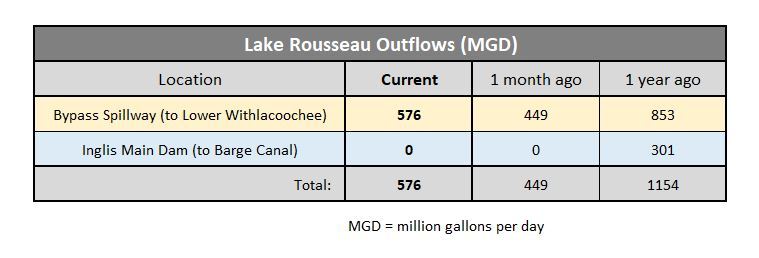
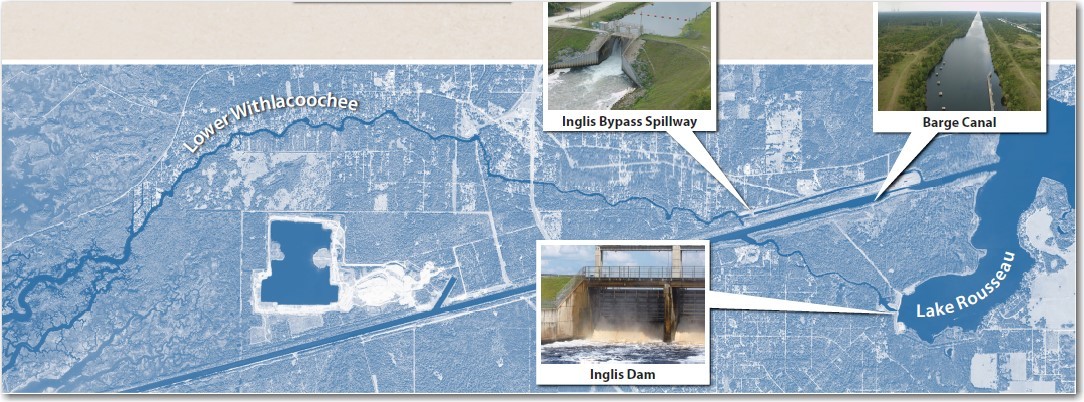
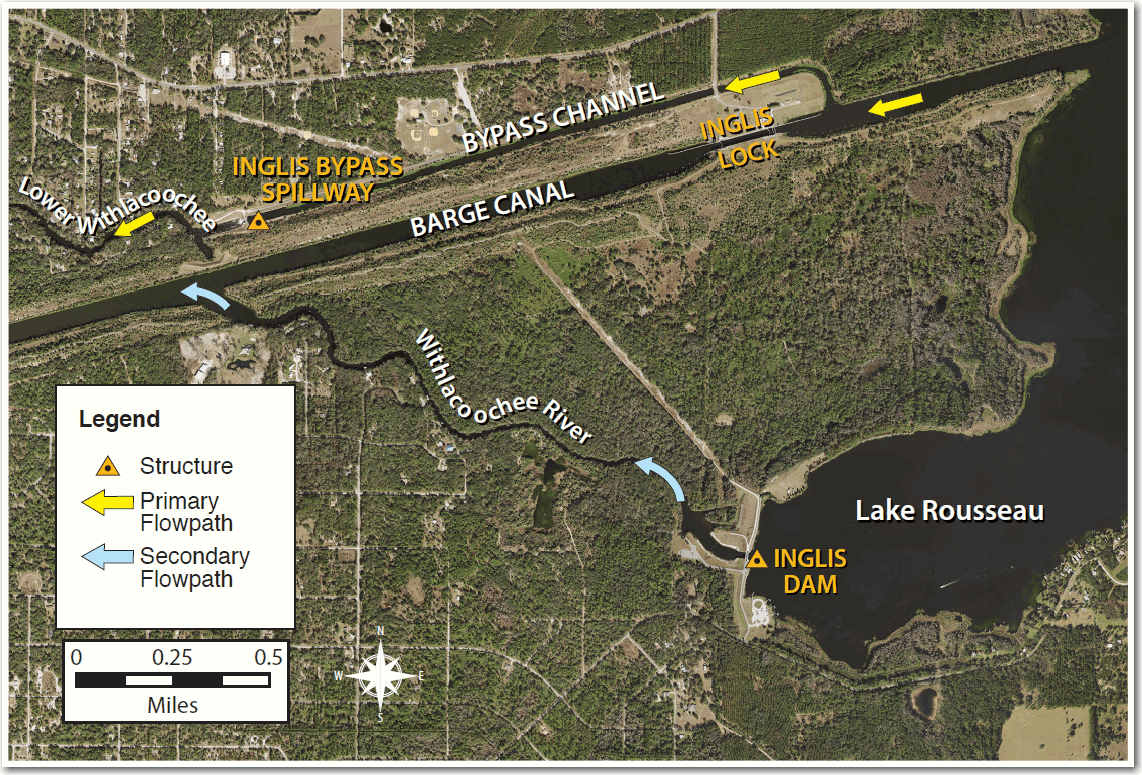
Have a great week!
Mark
Mark Fulkerson, Ph.D., P.E.
Chief Professional Engineer
Water Resources Bureau
Southwest Florida Water Management District
(352) 796-7211, ext. 4410
(800) 423-1476 (FL only)
(352) 279-4493 (cell)

